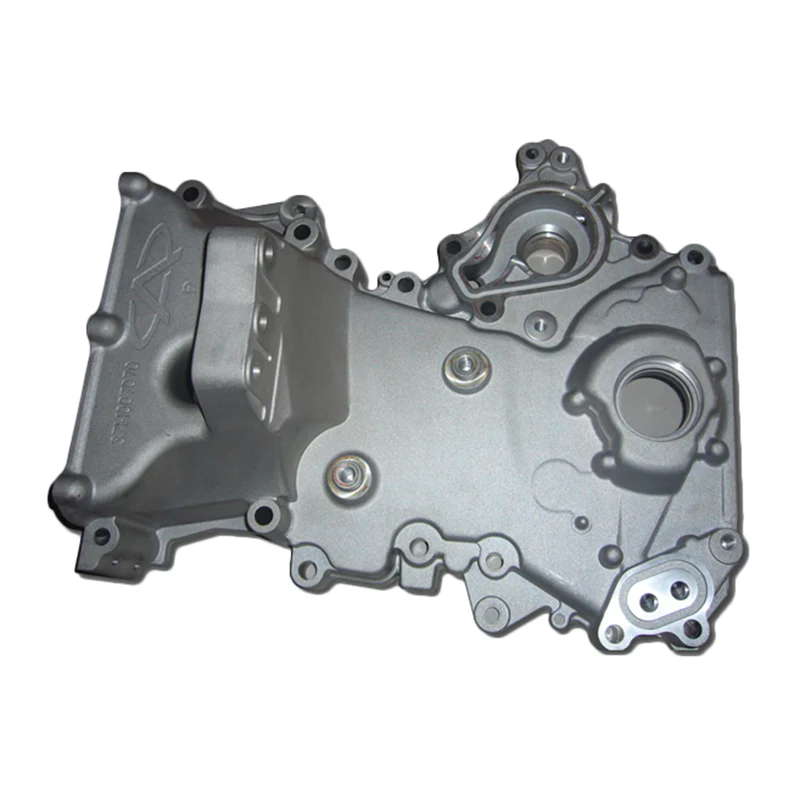- English
- Español
- Português
- русский
- Français
- 日本語
- Deutsch
- tiếng Việt
- Italiano
- Nederlands
- ภาษาไทย
- Polski
- 한국어
- Svenska
- magyar
- Malay
- বাংলা ভাষার
- Dansk
- Suomi
- हिन्दी
- Pilipino
- Türkçe
- Gaeilge
- العربية
- Indonesia
- Norsk
- تمل
- český
- ελληνικά
- український
- Javanese
- فارسی
- தமிழ்
- తెలుగు
- नेपाली
- Burmese
- български
- ລາວ
- Latine
- Қазақша
- Euskal
- Azərbaycan
- Slovenský jazyk
- Македонски
- Lietuvos
- Eesti Keel
- Română
- Slovenski
- मराठी
- Srpski језик
What Makes 3D Printing the Future of Modern Manufacturing?
2025-09-10
In the ever-evolving landscape of manufacturing, 3D printing—also known as additive manufacturing—has emerged as one of the most transformative technologies of the 21st century. From rapid prototyping to large-scale industrial production, 3D printing is redefining how products are designed, tested, and manufactured. Its ability to create highly customized, precise, and cost-effective solutions has positioned it.
At its core, 3D printing is the process of creating three-dimensional objects layer by layer using computer-aided design (CAD) models. Unlike traditional subtractive manufacturing, where material is cut away to achieve a desired shape, additive manufacturing builds objects from the ground up, minimizing waste and unlocking design possibilities that were once impossible.
How 3D Printing Works
-
Design Phase
-
Engineers create a CAD model of the desired product.
-
The model is converted into a format the printer can interpret, typically STL or OBJ.
-
-
Slicing Process
-
Specialized software “slices” the model into thin horizontal layers.
-
These instructions are sent to the 3D printer.
-
-
Printing Layer by Layer
-
The printer deposits material layer by layer, fusing it through heat, light, or binding agents depending on the technology used.
-
-
Post-Processing
-
Parts are cleaned, polished, or cured for improved strength and aesthetics.
-
Types of 3D Printing Technologies
-
FDM (Fused Deposition Modeling): Ideal for rapid prototyping and low-cost production.
-
SLA (Stereolithography): Uses liquid resin cured by UV light for highly detailed parts.
-
SLS (Selective Laser Sintering): Best suited for durable, functional prototypes.
-
DMLS/SLM (Direct Metal Laser Sintering / Selective Laser Melting): Specialized for metal components in aerospace, automotive, and healthcare.
-
PolyJet Printing: Delivers multi-material and multi-color precision for complex designs.
Applications of 3D Printing Across Industries
3D printing has grown beyond prototyping and is now transforming entire industries. Businesses that adopt this technology benefit from speed, cost-efficiency, and design flexibility.
Key Sectors Leveraging 3D Printing
Aerospace and Defense
-
Produces lightweight yet strong components to improve fuel efficiency.
-
Enables complex geometries impossible to achieve with traditional manufacturing.
-
Reduces lead times from months to days.
Healthcare and Medical Devices
-
Custom prosthetics, dental aligners, surgical tools, and implants are now 3D printed.
-
Bio-printing is being explored to create tissue scaffolds and organ models.
-
Provides patient-specific solutions for better treatment outcomes.
Automotive Industry
-
Accelerates prototyping of vehicle components.
-
Enables production of custom tools, jigs, and fixtures.
-
Supports low-volume manufacturing of high-performance parts.
Consumer Goods
-
From eyewear to footwear, 3D printing enables highly personalized products.
-
Allows companies to test market concepts rapidly and reduce inventory costs.
Construction and Architecture
-
Large-scale 3D printers create structural components and even entire houses.
-
Reduces material waste and promotes sustainable building practices.
Technical Specifications of High-Performance 3D Printers
Choosing the right 3D printer depends on speed, precision, material compatibility, and production scalability. Below is a summary of core specifications for industrial-grade 3D printers:
| Feature | Specification | Impact on Performance |
|---|---|---|
| Build Volume | 300 x 300 x 400 mm to 1000 x 1000 x 1000 mm | Determines maximum size of parts produced |
| Layer Resolution | 20μm to 100μm | Higher resolution means smoother surfaces and finer details |
| Print Speed | 50 mm/s to 300 mm/s | Impacts turnaround time for production |
| Supported Materials | PLA, ABS, PETG, Nylon, Resins, Metals | Flexibility for diverse industrial needs |
| Connectivity | USB, Ethernet, Wi-Fi, Cloud Integration | Simplifies file transfer and remote monitoring |
| Software Compatibility | Supports STL, OBJ, AMF, and G-code files | Ensures seamless workflow integration |
| Operating Temperature | 20°C to 45°C | Critical for maintaining material consistency |
By adopting 3D printers with these specifications, businesses can achieve higher precision, faster production, and consistent quality—a necessity for staying competitive in today’s markets.
Why Choose 3D Printing for Your Business?
The shift toward on-demand manufacturing has never been more apparent. Companies adopting 3D printing are witnessing significant benefits:
Cost Reduction
-
Minimizes material waste compared to subtractive methods.
-
Eliminates the need for expensive molds or tooling.
-
Enables small-batch production at a fraction of the cost.
Faster Time-to-Market
-
Speeds up prototyping and iteration cycles.
-
Shortens lead times from months to weeks or even days.
-
Allows businesses to respond quickly to market changes.
Enhanced Customization
-
Supports personalized products for consumers.
-
Adapts to niche requirements in industries like healthcare and aerospace.
Sustainability
-
Reduces waste by using only the material needed.
-
Enables lightweight designs, lowering transportation emissions.
-
Supports recycled and bio-based materials.
Common FAQs About 3D Printing
Q1. What materials can be used for 3D printing?
A1. A wide variety of materials can be used depending on the printer type and application. Common options include plastics like PLA, ABS, and PETG; resins for detailed components; metals like titanium and aluminum for industrial uses; and even composites for high-strength applications.
Q2. Is 3D printing suitable for mass production?
A2. While traditionally used for prototyping, modern industrial 3D printers now support small to medium-scale production efficiently. With advancements in speed, material versatility, and automation, 3D printing is increasingly becoming a cost-effective solution for limited-run and customized products.
Driving Innovation in 3D Printing
At Mudebao, we are committed to delivering cutting-edge 3D printing solutions tailored to meet the demands of diverse industries. Our high-performance printers combine precision, scalability, and versatility, empowering businesses to stay ahead in a competitive landscape.
Whether you’re seeking rapid prototyping, full-scale production, or highly customized manufacturing solutions, Mudebao provides the expertise and technology to make it possible.
Ready to transform your business with 3D printing?
Contact us today to discuss your project requirements and discover how Mudebao can help you achieve faster, smarter, and more efficient manufacturing.






